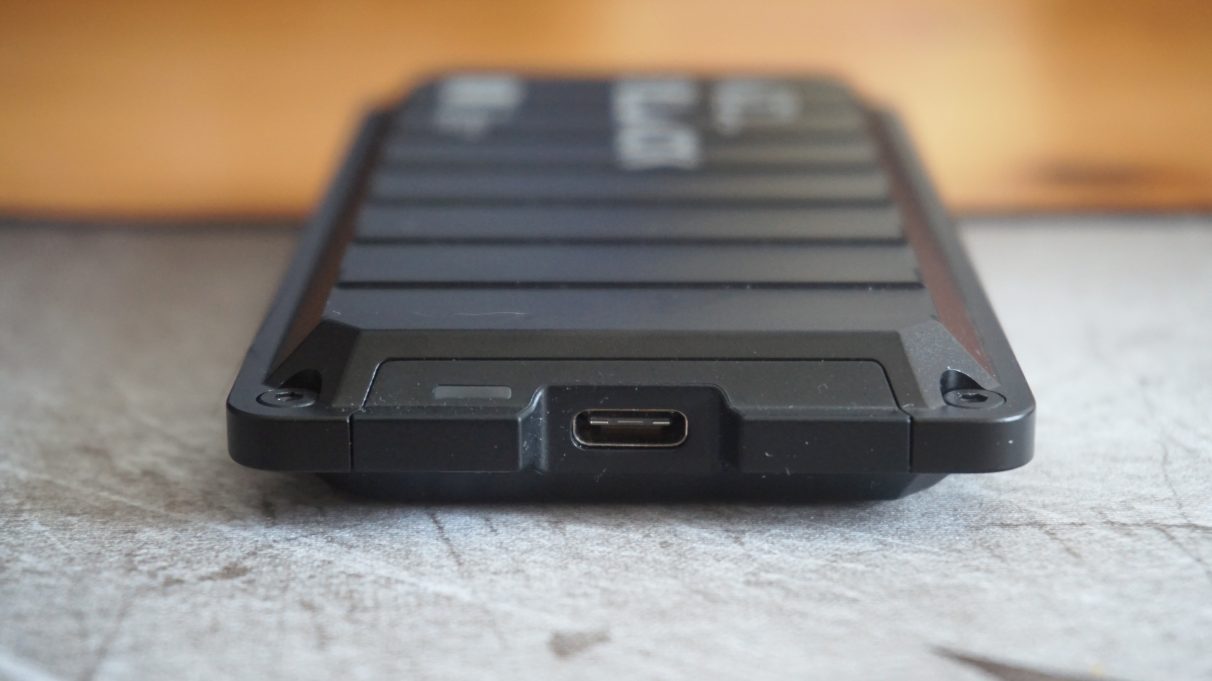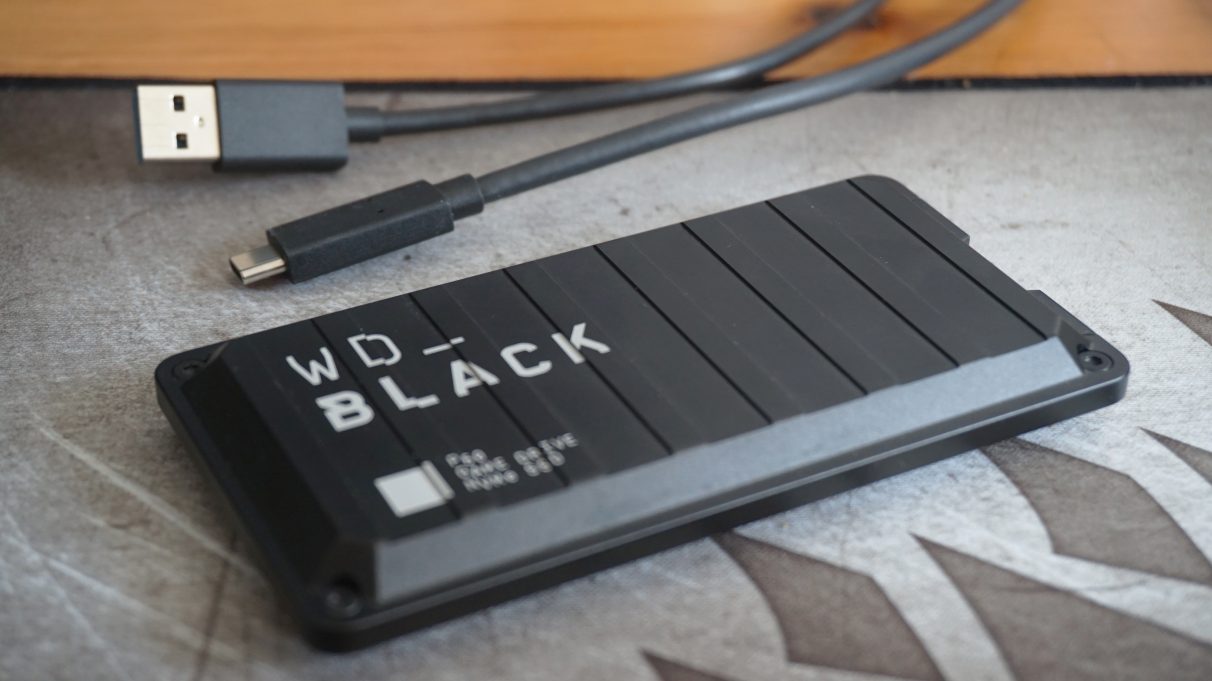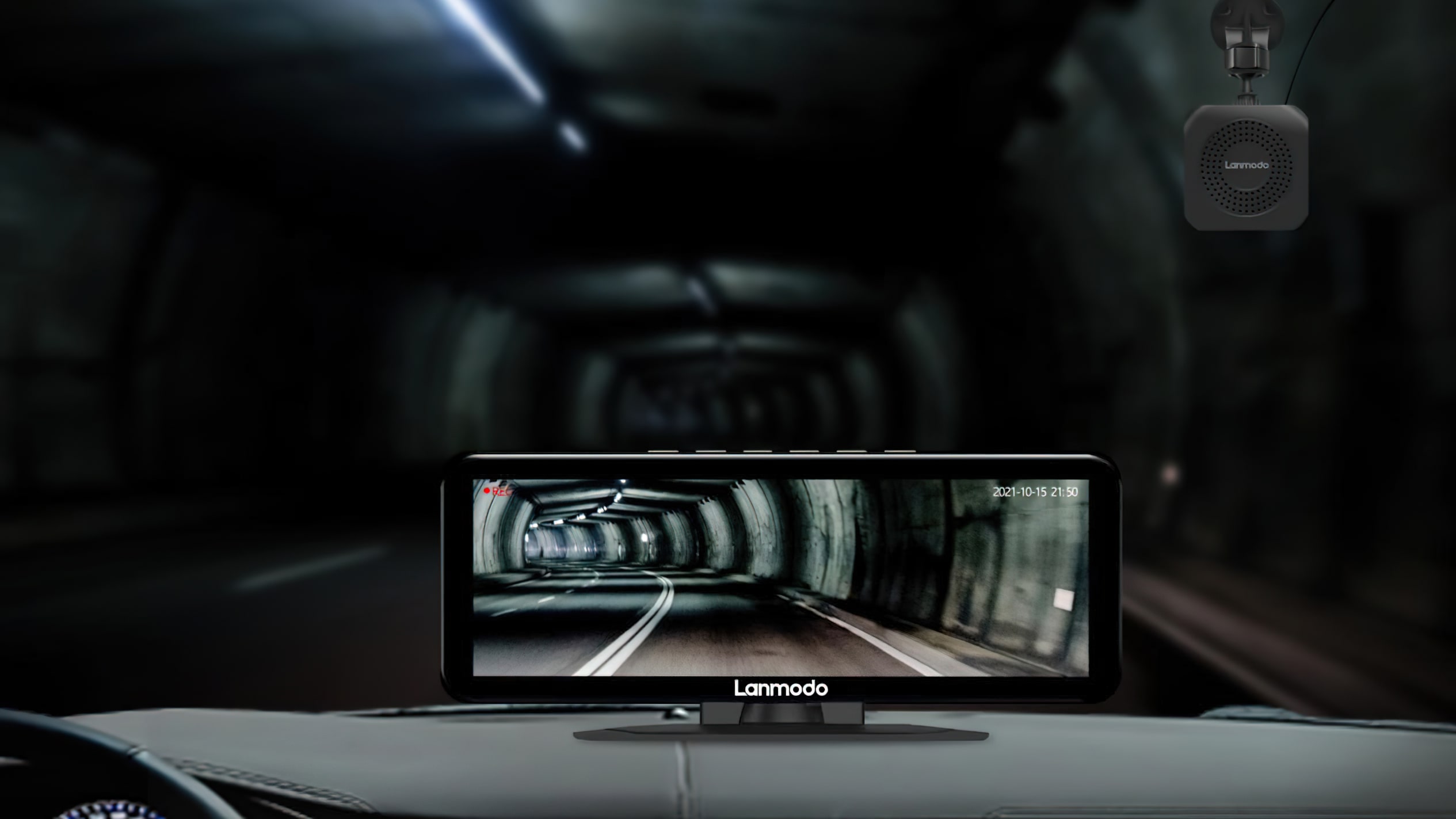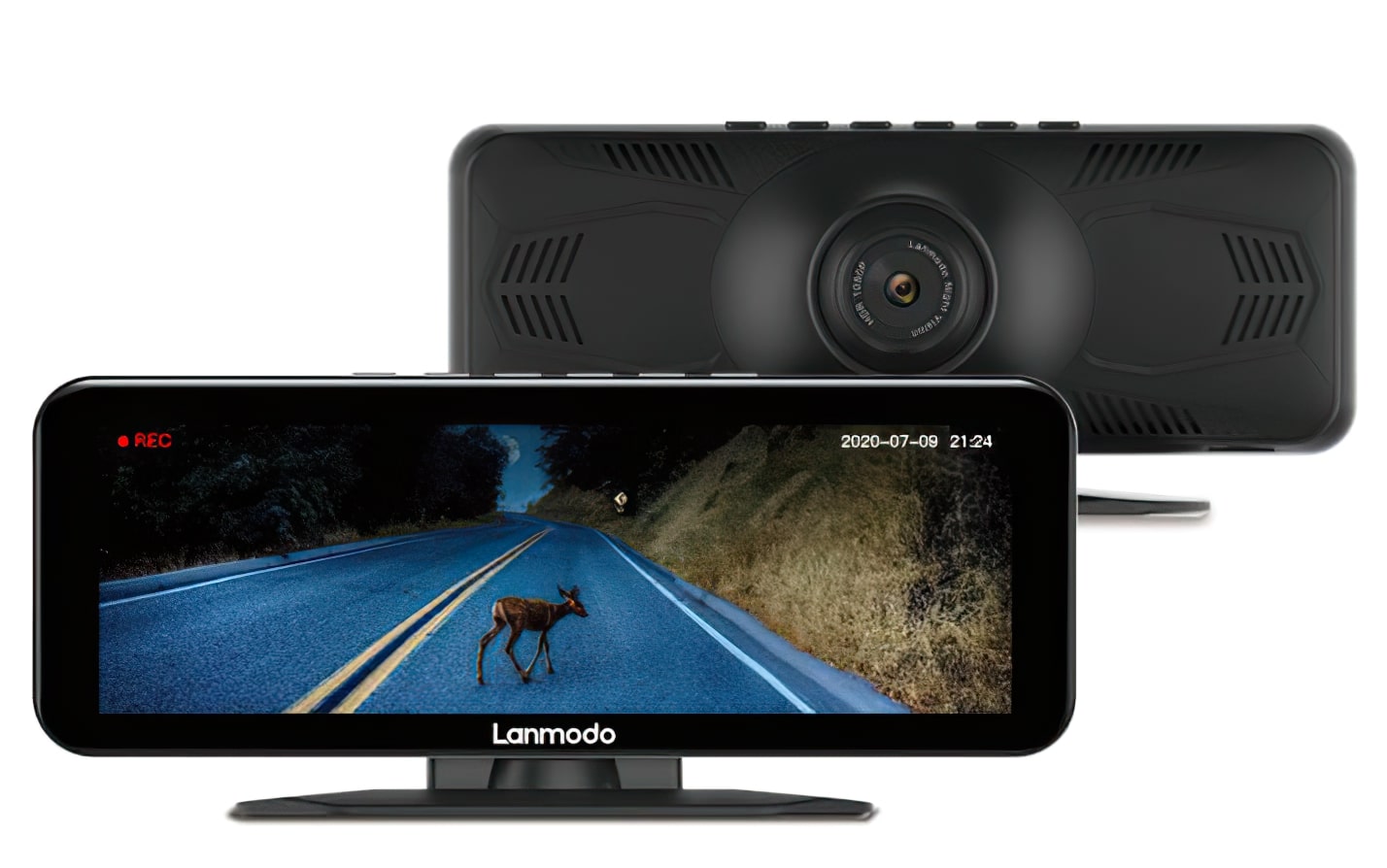
There have been increasingly more moveable SSDs supporting the brand new USB 3.2 Gen 2 customary cropping up during the last couple of months. First, we had the Samsung T7 Touch, the most recent, contact sensor-secured successor to my present best gaming SSD champion, the Samsung T5. Then there was Crucial’s X8, which was a smidge quicker than the T7 Touch and cheaper besides. Now, WD’s Black P50 has lastly landed on my desk. Clad in the identical powerful, corrugated delivery container-like casing as WD’s Black P10 exterior HDD, the P50 definitely appears the a part of a high-end, no-nonsense moveable SSD drive, however does it have the pace to match? Here’s wot I believe.
Technically, the WD Black P50 is a bit fancier than its Samsung and Crucial rivals, because it truly helps the even newer USB 3.2 Gen 2×2 customary, moderately than simply the common USB 3.2 Gen 2 pace. What’s the distinction, I hear you ask? Well, whereas the conventional Gen 2 helps as much as 10 Gbit/s, Gen 2×2 doubles that to a most of 20 Gbit/s. To put that in friendlier, MB/s phrases, WD declare the P50 can ship as much as a whopping 1980MB/s, making it twice as quick as present USB 3.1 units.
You do, after all, want a PC motherboard or laptop computer that helps the USB 3.2 Gen 2×2 customary so as to get the very best from the WD Black P50, however proper now that’s restricted to a really choose variety of them, so it’s doubtless you received’t have the ability to make full use of WD’s new drive till you subsequent improve. Indeed, my late 2018 Dell XPS 15 laptop computer and the Asus Prime Z370-P motherboard inside my PC nonetheless solely have USB 3.1 ports, for instance, so even my testing received’t have the ability to paint the total image of what the Black P50 is absolutely able to. The Black P50 is backwards suitable with older USB requirements as nicely, however its switch speeds can be naturally restricted by their respective bandwidth capabilities.

So, is it price shelling out for the WD Black P50 now to be sure you’ve obtained the very best future-proofing potential, or are you truly higher off plumbing for a USB 3.1 machine just like the Samsung T5? Price-wise, the WD Black P50 is sort of a troublesome ask. At time of writing, it’s one of the costly moveable SSDs you should purchase proper now, with its 500GB mannequin going for £150 / $165, and its 1TB model setting you again an much more extortionate £240 / $250. There’s additionally a 2TB mannequin that prices a whopping £400 / $500.
That’s fairly a bit greater than what you’ll pay for the Crucial X8, for instance, whose 1TB mannequin at present goes for simply £150 / $165 – the identical as WD’s 500GB drive. Heck, even the Samsung T7 Touch’s 1TB mannequin is at present solely £195 / $230, which remains to be significantly cheaper than the WD Black P50, whereas the older 1TB Samsung T5 could be had for £148 / $175. The worth of recent expertise, eh?
It wouldn’t be so dangerous if the WD Black P50 provided a noticeably quicker expertise on present gen units, however once I examined it with my Dell XPS 15 laptop computer and Asus Prime Z370-P motherboard, its USB 3.1 speeds have been truly significantly slower than its rivals.

The WD Black P50 comes with two cables within the field – a USB-C to USB-C and a USB-C to USB-A.
Indeed, I examined the WD Black P50 a number of instances to ensure the next outcomes have been right, and I even re-formatted the drive and examined it once more to verify. And but, each time I ran AS SSD’s 1GB sequential and random 4K assessments over its bundled USB-A cable, I obtained the identical learn and write scores. Sequentially, the WD Black P50 managed simply 42MB/s learn and 41MB/s write, whereas its random speeds have been an abysmal 11MB/s learn and 15MB/s write, which is fairly horrible.
The Crucial and Samsung, however, have been up within the 420MB/s zone for his or her sequential learn and write instances over USB-A, whereas their random speeds got here in at a a lot nippier 20MB/s learn and round 37MB/s write.
The WD Black P50’s switch speeds have been lifeless gradual once I ran AS SSD’s copy benchmark over USB-A as nicely. This includes transferring three completely different file sorts from my OS drive to the SSD – an ISO folder consisting of two massive information, a packages folder with numerous little information, and at last a game folder that’s made up of each massive and small information. I imply, the WD Black P50 was so sloth-like right here that it even fell behind my outcomes for WD’s Black P10 HDD, and I simply couldn’t fairly work out why it carried out so badly.
Thankfully, the WD Black P50’s speeds tremendously improved once I converted to utilizing its bundled USB-C cable, displaying outcomes that have been far more according to what I used to be anticipating. However, they nonetheless weren’t quick sufficient to justify that huge worth hike. Here, the WD Black P50 managed a random learn pace of 19MB/s and a random write pace of 38MB/s. Both of those have been a tad quicker than the Samsung T7 Touch, which managed 18MB/s learn and 37MB/s write, however the Crucial X8 nearly held on to its lead due to its greater 23MB/s learn pace, regardless that its random write pace was an similar 38MB/s.

It was an identical image once I re-ran AS SSD’s copy benchmark as nicely. Here, the WD Black P50 managed a switch pace of 556MB/s for the ISO check, 155MB/s for this system check, and 398MB/s for the game folder, placing it forward of the T7 Touch however behind the Crucial X8.
WD do, at the very least, offer you a 5 12 months guarantee with the Black P50, which is for much longer than the three years you get with the Samsung and Crucial, however even that isn’t actually sufficient to make up for the massive distinction in worth.
As I stated earlier than, with out a correct USB 3.2 Gen 2×2 machine to seek out out what the Black P50 is absolutely able to, I can solely assess what you get out of it on older {hardware}, which proper now’s just about zero in comparison with the £150 / $165 1TB Crucial X8. The Samsung T5 remains to be the most cost effective and greatest worth choice for these after a 500GB moveable drive at £82 / $105 (and for these whose laptops and PCs nonetheless solely have USB Type-A ports), however as soon as you progress as much as 1TB, the Crucial X8 is a troublesome act to beat, significantly in case your PC or laptop computer has a USB-C port.


